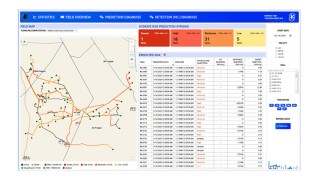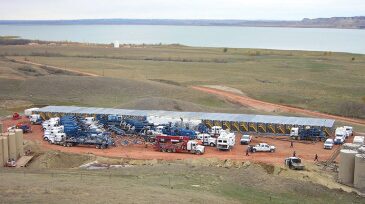Enhanced recovery
Entrepreneurial mindsets with the motivation to explore new materials, not limited to focusing on traditional hydrocarbon gas, CO2, and chemicals such as polymer and surfactant, are becoming more important for broadening prospects beyond the conventional EOR scene.
This paper discusses a comprehensive hybrid approach that combines machine learning with a physics-based risk-prediction model to detect and prevent the formation of hydrates in flowlines and separators.
The objective of this microfluidic investigation is to identify and test two novel applications for magnetic fluids in porous media for subsurface oilfield applications.
-
The number of subsea wells has increased steadily to more than 5,500 by the end of 2012.
-
This paper presents a concept for recovery in Canadian oil sands that uses water injection to condition a reservoir interval sufficiently to relieve the overburden stress on the oil sand and increase its porosity and permeability.
-
To increase the production of a heavy-oil reservoir offshore Congo, a study of DHEH applications has been carried out with encouraging results.
-
Work conducted in the Surmont field of Alberta, Canada, provided an excellent starting point to optimize flow-control improvements to the SAGD process.
-
Research into whether CO2 can be used to coax billions more barrels of oil from unconventional formations is beginning to show promise.
-
Tests showing increased recoveries in the Bakken formation using CO2 could have significant implications for the upstream oil and gas industry.
-
This is the most exciting time for enhanced oil recovery (EOR) in recent memory. At last, almost everyone is talking about increasing recovery factors, and improved oil recovery (IOR) and EOR are being considered natural components of reservoir management.
-
Foam simulation brings various numerical challenges. Some of these problems are largely cosmetic.
-
This paper discusses the process undertaken by the Clair Ridge project in getting RS enhanced oil recovery (EOR) adopted as a Day-1 secondary waterflood.
-
Factors such as hydraulic gradients in the horizontal completion, geologic and fluid variations in the reservoir, and well-placement issues can produce very poor steam conformance in steam-assisted gravity drainage (SAGD).













